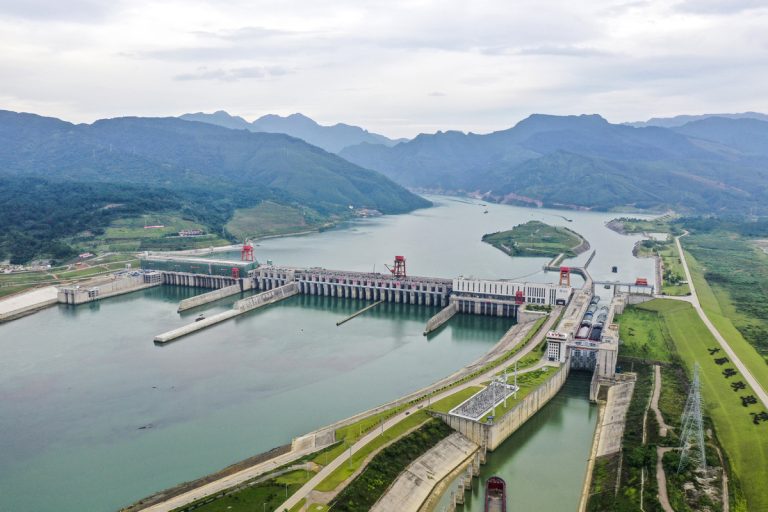
Donald Trump, the 45th President of the United States, is set to make a historic return to the White House as the 47th President on January 20, 2025. Trump, a prominent businessman prior to his presidency, faced a significant defeat in the 2020 election but has made a stunning political comeback. On November 5, 2024, he triumphed over Vice President Kamala Harris, securing a decisive victory. This remarkable resurgence marks one of the most extraordinary turnarounds in the modern American political era. Donald Trump has made history as the first U.S. president in 132 years to be re-elected following a break in his presidency. This victory represents his second consecutive triumph over a female challenger in a general election. With this achievement, Trump joins Grover Cleveland as the only other president in more than 130 years to secure non-consecutive terms in office.
Donald Trump’s re-election as the 47th President of the United States has sparked renewed anticipation for the revival of partnerships that were halted during President Joe Biden’s administration. Prime Minister Narendra Modi extended congratulations to Trump over X platform (formerly known as Twitter) on his “historic” victory and expressed optimism about reinvigorating their collaboration to enhance the India-U.S. Comprehensive Global Strategic Partnership.
The U.S. is currently India’s second-largest trading partner. Bilateral trade between the two nations stood at $128.55 billion in 2023 and $119.5 billion in 2022. “India has had positive engagements with Trump in the past. There is a strong rapport between PM Modi and Mr.Trump. Trump is in favor of ending ongoing conflicts in Ukraine and the Middle East. This aligns with India’s goal of bringing an end to this era of conflicts.
In its report, Nasscom emphasized the critical role of the technology sector in strengthening US-India bilateral relations. The U.S. stands as the largest market for India’s $254 billion tech industry, which contributes $80 billion to the U.S. GDP. The sector is pivotal in supporting U.S. companies and bolstering the American economy. Furthermore, India remains a prime destination for U.S. businesses, with over 1,000 American firms leveraging the country’s advanced digital infrastructure to foster innovation and develop competitive solutions.
India’s Trade and Immigration Dynamics under Trump’s regime
India is likely to encounter significant challenges in trade relations, particularly in the areas of tariffs and immigration policies, as the geopolitical landscape evolves. The unpredictable nature of Trump’s stance on these issues adds uncertainty to the future of bilateral trade between India and the United States. With a focus on key issues such as U.S. tariffs, geopolitical security, and immigration policy, the world is closely monitoring developments following Trump’s return to the White House. With 61% of registered U.S. voters indicating that immigration is a top priority, Trump capitalized on this issue during his campaign. He claimed that up to 25 million undocumented immigrants reside in the U.S. and outlined plans for mass deportations, aiming to remove as many as one million individuals immediately. While India may not face direct consequences from these actions, tensions could arise, particularly with respect to H1B visa regulations, which are vital to the Indian workforce in the U.S.
Trump has previously highlighted the strong relationship between the U.S. and India. Concurrently, he has also indicated that he intends to impose heavy tariffs on Indian imports. Despite these trade-related challenges, there remains mutual respect between the two leaders, and their bilateral ties are expected to grow in the coming years. Indian External Affairs Minister S. Jaishankar has acknowledged that trade and immigration issues will present challenges, but emphasized the continued strengthening of the India-U.S. relationship, as well as India’s engagement with the Quad. In a media interaction in Canberra, during a briefing on India-Australia bilateral talks, Jaishankar expressed confidence that the relationship would continue to deepen. “The relationship will only grow,” he asserted, underscoring the ongoing commitment to fostering closer ties between the two nations.
Trump’s Reciprocal Trade Act: Challenges and Opportunities
Donald Trump is proposing a “Reciprocal Trade Act,” aimed at addressing trade imbalances with countries such as India, which he has criticized as a “big abuser” of tariffs. In emphasizing the intelligence and competitiveness of global leaders, Trump also underscores the geopolitical challenges posed by China. The trajectory of U.S.-India trade relations could be significantly shaped by Trump’s policies, which experts suggest may result in more stringent trade measures and higher tariffs, potentially impacting key Indian sectors such as information technology, pharmaceuticals, and textiles.
However, analysts argue that India’s trade position could experience an improvement under Trump’s presidency, particularly as the U.S. shifts away from its reliance on Chinese manufacturing. This transition may create new opportunities for Indian exports, especially in areas where India can offer competitive alternatives to Chinese goods. While Trump’s trade policies are likely to present challenges, they might also generate new prospects for trade and investment between the two nations, creating a dynamic environment for future economic engagement between India and the U.S.
In conclusion, Donald Trump’s potential return to the U.S. presidency raises critical questions for India, particularly in trade, immigration, investment, and oil prices. His “America First” policy may pressure India to lower tariffs on U.S. goods, while stricter immigration policies could affect Indian tech professionals’ access to H1B visas. Conversely, Trump’s administration could foster investment opportunities as the U.S. reduces dependence on China. Enhanced defense cooperation is likely, but Trump’s hardline stance on Iran may drive up global oil prices, impacting India’s energy costs. To effectively navigate through these opportunities and challenges, India would need to adopt a flexible and proactive approach, balancing its economic interests with diplomatic strategies to ensure continued growth and stability in its relationship with the United States under Trump’s leadership.
[Photo by Gage Skidmore.]




